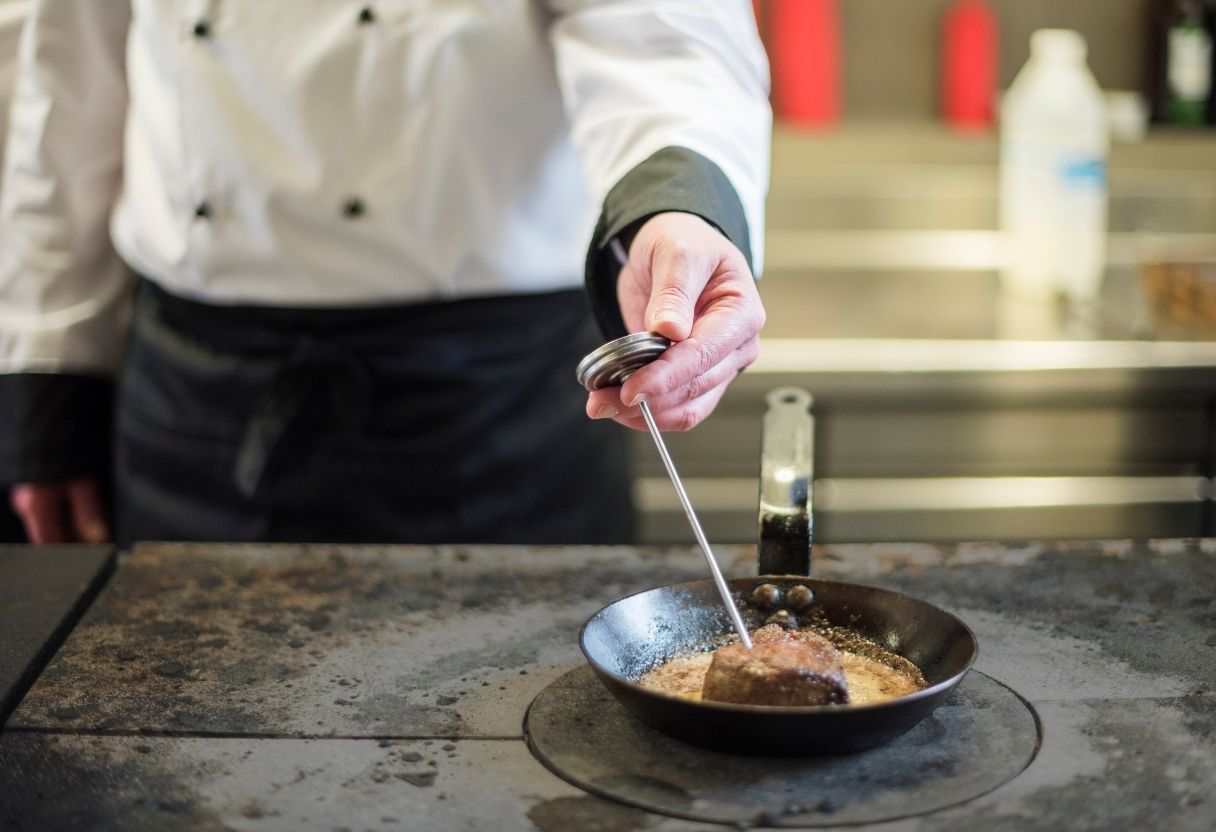How Controlling Food Temperature Protects Your Business

In foodservice, the primary purpose of refrigeration is to keep food safe. Holding inventory at temperatures below 40°F inhibit the growth of bacteria, reducing the risk of foodborne illnesses. Therefore, to ensure the safety and quality of food, you need to have a system in place that monitors the areas where you keep inventory.
Thermometers are traditionally used for temperature monitoring in food service but can be ineffective. Thermometers may not produce reliable data due to a lack of proper calibration and require time-consuming manual audits that result in “pencil whipped” or forged logs.
New devices, such as GlacierGrid, automate and improve temperature monitoring processes through wireless sensors and integrated software. However, while temperature monitoring is essential, it’s part of a tandem approach to ensure food safety and longevity. Read on to learn more.
Food temperature and bacterial growth
While any amount of temperature fluctuation can affect food quality, the temperature range between 40°F to 140°F represents a threat to the safety of your inventory. This is the reason it is known as the food safety danger zone.
Bacteria flourish in warm, moist environments, making food stored within the food safety danger zone an excellent breeding ground for these microorganisms. Foodborne illnesses are caused by excess bacterial content in the food served to customers.
Monitoring your food temperatures is an excellent way to prevent bacterial spread. Failure to do so may expose you to various risks that can hurt you and your business.
Food temperature risks
If your customers consume bad food and get sick, a health inspector will likely visit your business. Typically, food service organizations are evaluated by the health department of the jurisdiction they are located in. From there, each restaurant receives a numbered score or letter grade. When health inspectors find violations of the health code during an inspection, operators should expect repercussions. The ramifications for health code violations range in severity from fines and temporary shutdowns to lawsuits and permanent closure.
Cold storage is a common source of health code violations. This is because of the delicate nature of perishable foods stored in areas like walk-ins, coolers, and low-boys. Monitoring temperature is a great way to help you pass a health inspection. However, several other best practices can help you avoid a health inspection altogether.
Food safety best practices
Many restaurants take other measures to prevent bacterial growth, such as utilizing FIFO or including basic sanitation practices are part of your preventative maintenance protocols. There are also several other methods your team can employ to ensure safe food temperatures.
Click here to learn more about inventory storage protocols such as FIFO, or click here to learn more about preventative maintenance techniques.
Inventory accountability
One way to prevent food from slipping into the danger zone is to create inventory accountability amongst your staff. Designate a member of your team to keep an eye on your inventory during delivery. It’s crucial to make sure nothing perishable is left out of cold storage for a significant amount of time, specifically for periods longer than 120 minutes. An assigned watcher serves as a safeguard to ensure nothing is forgotten about.
Education
Training your team about food safety protocols is also an essential aspect of ensuring food safety. Your staff members need to know this information to avoid the risks of transmitting foodborne illnesses to customers more effectively.
Click here to read our article about how to create a culture of food safety in your organization.
For example, visible signs of bacterial contamination may take longer to appear than it takes for food to spoil. Cooks may think that inventory is usable without realizing that bacterial spread has already reached dangerous levels. Training your team allows them to proactively consider the quality and risk factors of the food they serve.
Ensure the safety of older inventory
Despite your best efforts to predict the amount of inventory needed to satisfy demand, variation is inevitable. You may not be able to predict which items are popular from one week to the next, so it’s essential to optimize the conditions in which you store them.
Temperature monitoring systems allow you to retroactively track the conditions in which your inventory was stored since delivery. The advantage of this strategy is that you can definitively confirm the items in question were never exposed to unsafe conditions. In turn, you gain the ability to reduce food waste and confidently serve items stored for more extended periods.
Monitor food temperature with GlacierGrid
You don't want to cut corners when it comes to food temperature and the related safety risks. While you can take several different strategic approaches to ensure the safety of your inventory, installing a temperature monitoring system from GlacierGrid will make the job much easier. With highly 24/7 monitoring and customized alerts and reports, you can rest easy knowing that you are protecting your business and customers with GlacierGrid.
Click below to try GlacierGrid today and see for yourself how our temperature monitoring and analytics platform can help protect your business and inventory.







